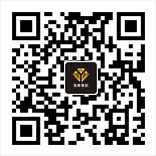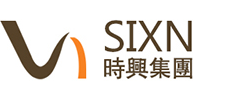Interpretation of the new edition of ISO 9001-2015 Part II
- Categories:Industry News
- Author:
- Origin:
- Time of issue:2017-08-12
- Views:24
(Summary description)On September 23, 2015, the highly anticipated ISO 9001:2015 was released, marking a new beginning for global quality management. Dr. Nigel, Chairman of the ISO/TC 176 Working Committee responsible for standard revision work, said: The new ISO 9001 version is ready for the next 25 years of quality management standards. Quality people have been paying attention to their changes. Recently, experts and scholars have comprehensively and systematically interpreted the significant changes in the new standards and the roadmap for their transition. As the content of the article is detailed and the length is long, it will be divided into two parts, so stay tuned.
Interpretation of the new edition of ISO 9001-2015 Part II
(Summary description)On September 23, 2015, the highly anticipated ISO 9001:2015 was released, marking a new beginning for global quality management. Dr. Nigel, Chairman of the ISO/TC 176 Working Committee responsible for standard revision work, said: The new ISO 9001 version is ready for the next 25 years of quality management standards. Quality people have been paying attention to their changes. Recently, experts and scholars have comprehensively and systematically interpreted the significant changes in the new standards and the roadmap for their transition. As the content of the article is detailed and the length is long, it will be divided into two parts, so stay tuned.
- Categories:Industry News
- Author:
- Origin:
- Time of issue:2017-08-12
- Views:24
On September 23, 2015, the highly anticipated ISO 9001:2015 was released, marking a new beginning for global quality management. Dr. Nigel, Chairman of the ISO/TC 176 Working Committee responsible for standard revision work, said: The new ISO 9001 version is ready for the next 25 years of quality management standards. Quality people have been paying attention to their changes. Recently, experts and scholars have comprehensively and systematically interpreted the significant changes in the new standards and the roadmap for their transition. As the content of the article is detailed and the length is long, it will be divided into two parts, so stay tuned.

Digital interpretation of the new standard
1 Purpose
2 Models
3 Pillars
7 Principles
8 Rhetoric
68 Requirements
7 principles
The quality management principle is the theoretical basis for the establishment of the ISO9001 quality management system standard, and the new version of the standard continues to use this model. These quality management principles were reassessed at the time of the revision of this standard, and one of the principles, the “system approach to management”, was incorporated into the process approach. Therefore, the eight quality management principles applied in the 2008 edition have now become seven quality management principles. which is:
|
ISO 9001:2015 7 management principles |
ISO 9001:2008 8 management principles |
|
1. Customer orientation |
1. Customer orientation |
|
2. Leadership |
2. Management role |
|
3. Employee awareness |
3. Full participation |
|
4. Process approach |
4. Process approach |
|
(incorporate into the process method) |
5. Systematic approach to management |
|
5. Improvement |
6. Continuous improvement |
|
6. Evidence-based decision making |
7. Decision-making based on facts |
|
7. Relationship management |
8. Mutually beneficial relationship with the supplier |
In terms of name and order, these quality management principles are not particularly changed. But in fact, the meaning of each quality management principle has been completely explained, both the past amendments and supplements, as well as some new expressions.
Compared to the short description of the quality management principles of the old standard, ISO9000:2015 elaborates on each quality management principle in more detail, specificity and practicality. Every quality management principle is explained in the following four aspects:
1) Statement
2) Basic principles
3) Key benefits
4) Typical measures
The theory, basic intent, and how to implement these quality management principles are described in more detail. It takes so much effort to explain these principles and explain the importance of these principles to QMS. This is very helpful for us to understand, apply and effectively implement ISO9001, even in other management applications. It is recommended that everyone should seriously study and understand these seven quality management principles.
8 rhetoric
The eight rhetorical changes shown in the figure below are listed in the appendix of the new edition of ISO 9001:2015. These rhetoric itself are not particularly special or difficult to understand, but there are some far-reaching considerations hidden behind them, and some application flexibility. Here, we also do some brief explanations.
|
ISO9001:2008 |
ISO9001:2015 |
|
Product |
Product and service |
|
Deletion clause |
--- |
|
Manager representative |
--- |
|
Documents, quality manuals, documented procedures, records |
Documented information |
|
Working environment |
Process operating environment |
|
Purchased product |
Externally offered products and services |
|
Supplier |
External supplier |
|
Monitoring and measuring equipment |
Monitoring and measuring resources |
1) Product:
Replace the previous term "product" with "products and services".。
The purpose of listing the service list is to highlight the differences in the application of certain standards in products and services, and to facilitate the understanding and application of the service industry. Now, the term "product" no longer includes all output types, but only three forms of hardware, software, and process materials, and the services are listed separately. The feature of the service is that at least part of the output is implemented on the interface that is in contact with the customer.
As stated in the MSS high-level structure phase, if the organization has become accustomed to using the term "product" to include all output types, it is up to you to continue to retain such use, as long as you do not cause misunderstanding or adverse effects. It is not necessary to revise QMS to modify the expression of the product to the expression of the product and service, just to be consistent with the standard.
2) Deduction clause:
When ISO9001 was revised in 2000, the three certification standards at that time, namely ISO9001, ISO9002, and ISO9003, were combined into one, namely ISO9001. At this time, in order to facilitate the adaptation of the organization that originally applied different certification standards, the standard has specially set up a reduction clause arrangement, that is, clause 1.2. In the 2008 revision, since it is only a standard editorial revision, this The setting of a derogation clause can be retained.
Nowadays, the ability to improve the standard presentation, organizational understanding and application of standards is also strengthened. There should be no technical reasons for the organization to meet certain requirements of the standard. Therefore, it is appropriate to cancel the deletion clause.
Of course, for some organizations, the applicability of certain requirements of the review criteria may be required, as specified in Standard Clause 4.3. An organization may determine that a requirement does not apply only if it does not result in a failure of product and service compliance. Moreover, although the standard is not explicitly stated, the generally unsuitable requirement may only be part D of the PDCA cycle, which is a requirement within standard clause 8.
3) Manager representative:
The new version of the standard no longer has the requirements of a manager's representative, which is consistent with the idea of giving top managers a more active role. Of course, it does not mean that the organization cannot appoint management representatives. The key is that top management needs to participate in, support and lead QMS activities, and obtain reports on QMS performance, whether or not they are appointed, and need to confirm this.
4) Documents, quality manuals, documented procedures, records:
"Documentized information" replaces the old documents and records. When the standard mentions "keeping documented information", it means creating a file; and referring to "retaining documented information" means keeping records. This use is also from the requirements of Annex SL and is one of the requirements of the MSS high-end structure, mainly to be consistent with other management systems.
As with the terminology of the aforementioned 1) product, the organization can decide to retain past habits or use new rhetoric at its discretion.
Quality manuals and procedural documents are no longer mandatory, meaning that the organization's document structure and documentation are more flexible. For some service organizations, small organizations, and organizations with specific functions, it has great significance. For most traditional manufacturing organizations, the traditional pyramidal file structure and past documentation are still valuable. The organization can explore and try, the key is to ensure the QMS results are effective.
5) Working environment:
The process runtime environment now replaces the rhetoric of the work environment.
There are some processes, such as waiting for the customer in the service field, the contact with the customer and the service have not yet begun, not the working environment. However, the customer waiting process may still affect the customer's satisfaction. Appropriate consideration and control of such an environment may be necessary or even critical. Such as proper space, adequate seats, comfortable temperature, etc. Therefore, the consideration of the extension of the environment has been expanded.
On the other hand, the standard's consideration of the connotation of the environment through annotations has also expanded, in addition to the physical factors of the past, increased social and psychological factors.
This extension of the environmental factors and the connotation of the purpose, the purpose is to make the process effective, and ultimately enhance customer satisfaction.
6) Purchased products:
The wording of externally provided products and services instead of purchased products is collectively referred to as products and services obtained from external organizations through various forms such as outsourcing, outsourcing, or outsourcing. Correspondingly, these external organizations are collectively referred to as external suppliers.
This is due to the fact that the above process now uniformly applies the requirements of Standard Clause 8.4.
7) Supplier:
Same as above.
8) Monitoring and measuring equipment:
For some service processes, such as tour guide services, organizations still need to implement appropriate monitoring or measurement to verify that service requirements have been met, including obtaining customer satisfaction. In this case, it may not be possible to use some of the usual tangible monitoring and measurement equipment, such as questionnaires, telephone interviews, web surveys, etc. At this time, these questionnaires, telephone access systems, and network survey systems are a kind of monitoring and measurement resources.
The use of resources instead of device wording actually expands the available means of monitoring and measurement, which is conducive to the understanding and application of service organizations, and also meets actual needs.
68 requirements
In terms of the core requirements of the standard, from the standard clauses 4.1 to 10.3, there are a total of 68 major revisions (depending on the different understanding and evaluation criteria, the identification of this number may be different, the key is to understand the requirements of the standard). Some of these revisions are new requirements, and some are just changing the way they are described to clarify and clarify requirements. There are roughly the following types:
1) New requirements.Typical such as 4.1, 4.2, 6.1.1, 6.3, etc.
2) Revised and strengthened requirements.Typical examples are 5.1.1, 5.2.1, 6.2.1, etc.
3) Revised to clarify and clarify requirements.Typical such as 7.1.5, 7.3, 8.5.5, etc.
Because the length is too long, this article will not list them one by one.
Transfer road map
ISO/IAF jointly released the document IAF ID9:2015 on 2015-1-12, which is a formal ISO9001:2015 transfer guide. The document sets out some important principles for the various parties involved in the use of ISO 9001 (including accreditation bodies, certification bodies, organizations implementing ISO 9001, consultants and training institutions) and also provides some useful suggestions.
1) ID9: Some of the important guiding principles provided by 2015 include
a) The transition period is determined to be 3 years, from 2015-9-23 to 2018-9-22. During this time, the organization can choose to implement the transfer at any time.
b) The validity period of the ISO9001:2008 certificate cannot exceed the deadline for the transition
c) Relevant parties to ISO 9001 can implement training activities and conduct gap analysis activities from the DIS stage.
d) The organization's transfer activities can be carried out simultaneously with the normal renewal audit, supervision and audit, or a separate time can be arranged to implement the transfer review.
e) The rollover review needs to cover all processes that the organization is running. This means that it is often necessary to increase the auditor days.
f) The organization must continue to comply with all requirements of ISO 9001:2008 during the planning and implementation of the re-enactment process to ensure the continued effectiveness of the QMS.
2) The workflow for the implementation of the certification of the ISO9001:2008 certification, ID9:2015 also provides useful suggestions.
The following can be regarded as a complete implementation process, of course, only suggestions:
a) Implement a gap analysis against the new version of the standard;
b) Develop a plan for implementation of the transfer;
c) Provide training for internal stakeholders;
d) Revise existing QMS to meet the new requirements;
e) Start applying the ISO9001:2015 requirements;
f) Contact the certification body to implement the transfer certification.
3) The following is a normal roadmap for transition:

There are a few steps that need special explanation:
a) Internal auditor training:
It is usually not acceptable for the existing 2008 version of the internal auditor to directly implement the 2015 version of the audit. Internal auditors must demonstrate that they have understood the requirements of the new standard, including the necessary review techniques. For example, applying risk-based thinking to conduct audits and evaluate the organization's ability to adapt its QMS to its environment.
b) System revision:
When the organization revise its QMS in accordance with the new standards, it is important to maintain the integrity of the existing system to ensure that the QMS continues to be effective so that the original 2008 certificate can be maintained if the reprint fails to meet the requirements.
c) Operation record:
When applying for a re-enactment review, all requirements of the new version of the standard must be fully implemented and sufficient time must be run to verify that the capability is available and the QMS is valid. Usually this running time is no less than 3 months.
d) On-site audit:
Corrective actions need to be taken in a timely manner for non-conformities proposed in the re-certification audit. Depending on the circumstances, it may be necessary to provide corrective measures in a timely manner, as well as evidence that corrective actions are implemented and that the measures are effective. Failure to do so may affect the approval and issuance of the 2015 version of the certificate.
- End –
(The above content is transferred from the network, please refer to the study)
Scan the QR code to read on your phone
CONTACT US
Address:No. 3285, Yuanqu Road, Shengze Town,
Wujiang District, Suzhou City, Jiangsu Province
Copyright:Shixing Textile (Suzhou) Co.,Ltd. | Copyright - 2021 All Rights Reserved. 苏ICP备18038601号 Designed By:www.300.cn


Mobile phone official
website

